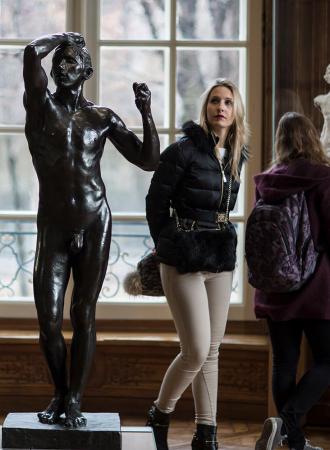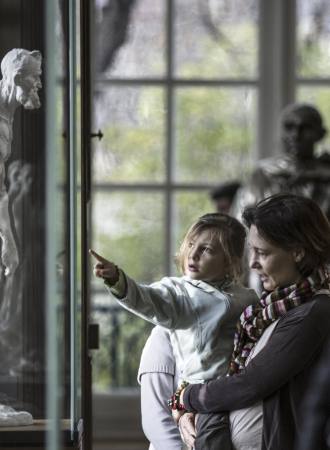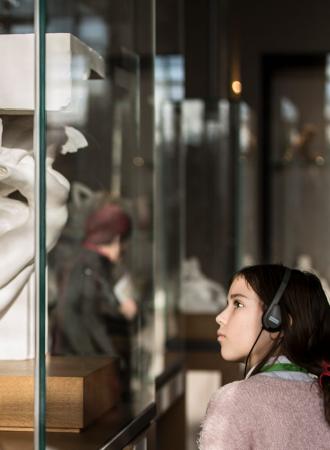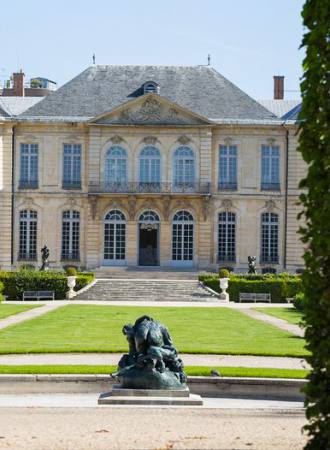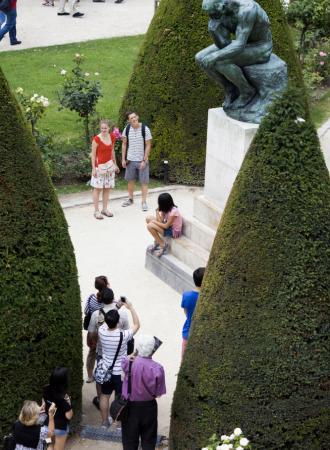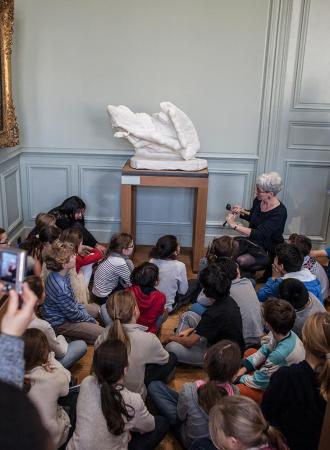Search the site
Rodin, a Japanese Dream
Was Rodin Japanese? Like many contemporary artists, at the end of the 1880s, the artist succumbed to the craze for Japonism, in the footsteps of the Goncourt brothers, Claude Monet, Georges Clemenceau and Octave Mirbeau. Utamaro, Hiroshige and Hokusai, admired through e xhibitions held in Paris, became his new masters, after Michelangelo and Phidias. Around 1900, Rodin added Japanese prints and art objects to his collection of Egyptian, Greek and Roman antiques. This late collection consists mainly of 19th century works, sometimes specifically designed for exports, which were given or exchanged among friendly circles of artists and collectors. This exhibition will present forty prints, books, albums, drawings and stencils, as well as nineteen objects from his collection, including statues, incense-burners in cloisonné bronze, netsukes, masks and ceramics.
Although Rodin did not fall entirely under the spell of Japonism, he nevertheless showed an interest in Japan, expressed in several forms. The ex hibition will show about ten so-called Japanese drawings from the years 1896-1900. It will also include several versions of two statues interpreted by the sculptor in sandstone, a material traditionally used by Japanese artists and rediscovered by ceramists under the influence of Japan: La Pleureuse by Edmond Lachenal and the monumental Head of Balzac by Paul Jeanneney.
But the highlight of the exhibition is the encounter between Rodin and the actress Hanako in Marseilles in 1906, placing Japan at the centre of his oeuvre. We will display a series of 26 sketched poses, accompanied by 26 sculptures in which Rodin illustrates in clay, plaster and then bronze, the expressiveness of his model, in turn dramatic or dreamy. Rodin’s relations with young Japanese artists will be illustrated by a donation of twenty prints by m embers of t he journal Shirakaba, published in 1911. A documentation section will be d evoted to the Japanese sculptor and cabinetmaker Kichizo Inagaki, who left the mark of h is Japanese style on the pedestals and frames of Rodin’s works and collection. A few books from the library and items from the sculptor’s personal archives relating to Japan will also be presented. And what if Rodin’s Japan turned out to be merely a dream?
The exhibition will be accompanied by a catalogue, co-published by Flammarion and the Rodin Museum, with a preface by Dominique Viéville, General Curator and Director of the Rodin Museum, and seven essays revealing the links between Rodin and Japan: A Dream Collection and In the Stud io of Kichizo Inagaki, Rodin’s Cabinetmaker,, by Bénédicte Garnier, researcher and librarian at the Rodin Museum; Rodin and Japan: Between Symbolism and D ecadence, by Christina Buley- Uribe, researcher and librarian at the Rodin Museum; An Interplay of View: Rodin and Hanako, by François Blanchetière, Curator at the Rodin Museum; Rodin and Japan: The Itinerary of an Encounter, by Véronique Mattiussi, researcher and librarian at the Rodin Museum; and finally, Rodin and Japanese Sandstone Art, by Christine Shimizu, Curator-in-Chief of the National Ceramics Museum in Sèvres.
Exhibition(s) location(s)
Musée Rodin
77, rue de Varenne, 75007, Paris
Dates
From May 16 to September 9, 2007
